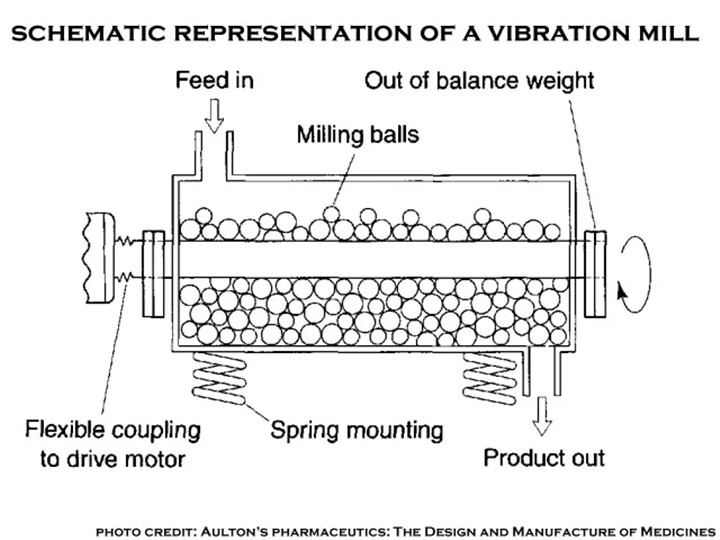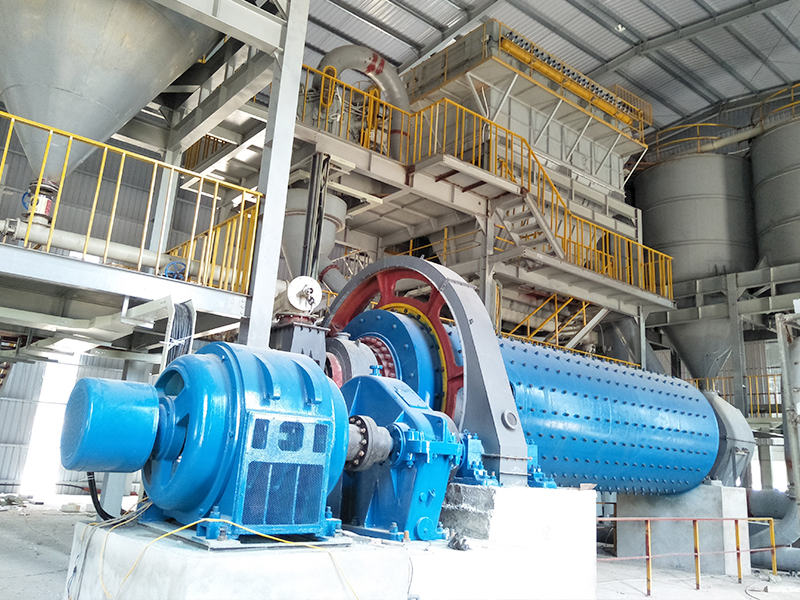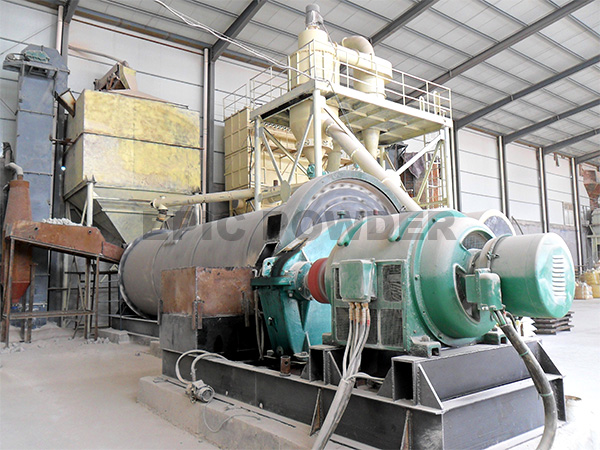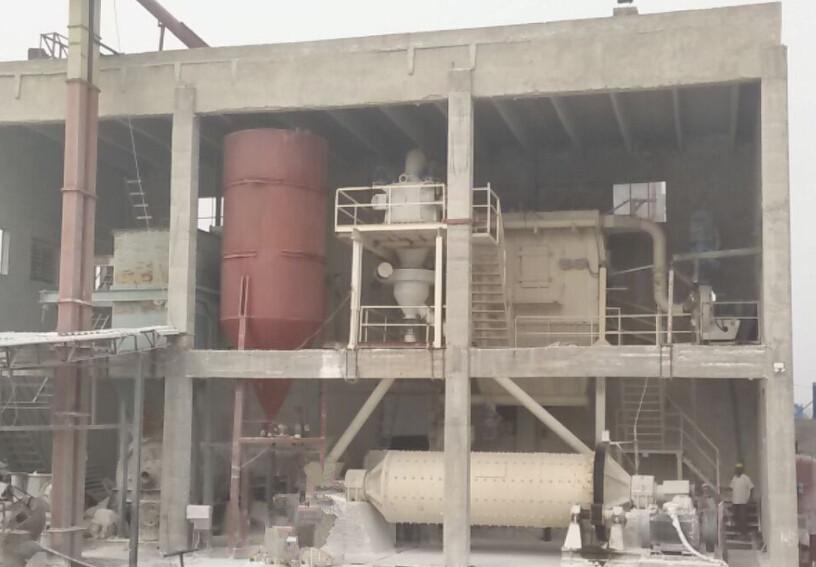NO. 369, Road S209, Huanxiu, Qingdao City, China
Vibration Mill

An article to understand vibration mill
Vibration mill (hereinafter referred to as vibration mill) is one of the ideal equipment for fine grinding or ultrafine grinding. It is an efficient fine grinding and ultrafine grinding equipment developed in recent years. Equipment that uses high frequency vibrations to "weaken" materials.The working principle of vibrating mill
Vibration mill is a kind of mechanical crushing equipment, which uses grinding media (spherical or rod-shaped) to exert strong impact, friction, shearing, extrusion and other effects on the material in the high-frequency vibration cylinder, so that the processed material can be broken. , crushing, refining, mixing and other purposes.
Classification of vibration mills
According to the classification of vibration structure, it can be divided into inertia type and deflection type (crankshaft rotary type).
According to the placement of the grinding cylinder, it can be divided into horizontal and vertical.
According to the number of grinding cylinders, it can be divided into single-cylinder type and multi-cylinder type.
According to the working mode, it can be divided into intermittent and continuous.
The structure of vibrating mill
The simple structure of the vibrating mill is mainly composed of the grinding drum of the mill, the vibration excitation device, the coupling, the driving motor and the base.
Vibration Mill Grinding Media
The motion of the grinding medium of the vibrating mill can be divided into four kinds of motion:
(1) The grinding medium vibrates violently with the cylinder;
(2) A single grinding medium rotates around its own geometric axis;
(3) A single medium revolves with the group;
(4) The whole grinding media group performs cyclic movement in the same direction as the rotation direction of the exciter.
Under the joint action of these four motions, there are four kinds of forces acting on the material to be ground:
(1) The impact force of the high-frequency vibration grinding medium on the material;
(2) The grinding force of the cyclic movement of the grinding media group on the material;
(3) The extrusion force of the single medium on the material with the group revolution;
(4) The exploitative force and cutting force of the grinding medium around its own geometric axis on the material.
Practice has shown that the selection of grinding media with high hardness, good wear resistance and heat resistance can improve the efficiency of vibration grinding.
Features of vibrating mill
Due to high-speed operation, it can be directly connected to the motor, eliminating the need for deceleration equipment, so the machine is light in weight and occupies a small area.
Due to the high medium filling rate and high vibration frequency, the production capacity per unit cylinder volume is large, the processing capacity is more than 10 times larger than that of the ball mill of the same volume, and the unit energy consumption is low.
Fine or ultra-fine grinding can be performed by adjusting the amplitude, frequency, grinding medium ratio, etc., and the particle size of the obtained grinding product is uniform.
The vibration range of the vibration mill body is small (tens of millimeters), which is convenient for working in high vacuum or controlled environment.
The body of the vibrating mill can be equipped with a cooling jacket to achieve low temperature grinding, and can also be equipped with a furnace to achieve high temperature grinding.
The structure is simple and the manufacturing cost is low.
Application of vibrating mill
Compared with other types of pulverizing mills, vibrating mills have certain advantages. The materials to be ground can be roughly divided into two basic types:
1) Low-priced materials that need a lot of processing, such as ore, cement, coal, etc.;
2) High-priced materials that need to be processed in relatively small amounts, such as medicine, pigments, abrasives, powder metallurgy, ceramics, etc.
In addition, the vibration mill can improve the surface activity of the powder in the fine processing of the powder, thereby producing a mechanochemical activation effect. Therefore, the vibration mill can also be used for efficient surface modification of the powder. Therefore, the application range of vibration grinding equipment is very wide, including cement industry, advanced ceramics, refractory materials and thermal insulation materials, fine abrasives and grinding and polishing agents, in addition to electronic information raw materials, papermaking, polymer matrix composite materials, paint coatings , petrochemical, high temperature lubricating coatings, etc. are also widely used.
Measures to Improve the Efficiency of Vibration Mill
Determine the appropriate vibration frequency
Vibration frequency is one of the factors that affects the intensity of vibration. The greater the vibration frequency, the greater the force of the grinding media on the material, such as extrusion and shearing, collision grinding, etc., the stronger the crushing ability, and the finer the product particle size. However, the vibration frequency is too high, although the grinding speed and work intensity can be improved, but the power consumption is greatly increased, and the mechanical wear is accelerated, so it is necessary to determine the appropriate frequency through experiments.
Determine a reasonable mill load
The reasonable mill load should be selected according to the filling rate of the designed grinding medium, the condition of the mill equipment, and the state of the reducer and the motor.
Reduce the moisture content of the grinding material
If the moisture content of the material is too high, the material will bring too much moisture into the mill, which will reduce the grindability of the material. At the same time, due to the large amount of heat generated in the grinding process, the free water and even the crystal water in the material evaporates and becomes water vapor, and the water-containing gas makes the fine powder after the material grind to flake and adhere, reducing the grinding efficiency. Practice shows that the ideal moisture content of the grinding material is about 1%.
Improve mill ventilation
Strengthen the ventilation of the mill and discharge the water-containing gas in time, which will avoid or reduce the "adhesion" phenomenon in the mill. Strengthening the ventilation of the mill can also discharge the fine powder of the material produced in the mill in time, which can reduce the phenomenon of over-grinding and buffering, thereby significantly improving the grinding efficiency. Production practice shows that for open-circuit grinding, the wind speed of the mill is required to be 0.3~0.5m/s; for closed-circuit grinding, the wind speed inside the mill is required to be 0.5~0.7m/s.
Improve the grindability of materials
The grindability of a material is a physical property of the material that indicates the difficulty of the material being ground. The grinding of some materials, such as cement clinker, can also change the grindability of the material by changing the mineral phase structure of the material.
Choose high-quality abrasives
High chromium cast iron ball forging abrasive material has high hardness, good wear resistance and heat resistance. Mills using such high-performance abrasive materials can significantly reduce wear and improve mill transport rates and product quality.
Add grinding aids to improve grinding efficiency
Grinding aids help to eliminate the adhesion of fine powder materials on the surface of the grinding body and the lining plate and the phenomenon of particle agglomeration, and strengthen the grinding effect, thereby significantly improving the grinding efficiency.
Strengthen the operation management of the grinding operation of the mill
On the basis of taking a series of measures to improve the grinding efficiency of the mill, the operation technology should be studied and management should be strengthened in the grinding operation. The important thing is that the mill should be stable and balanced in production and evenly fed.




Leave a Comment